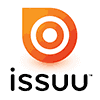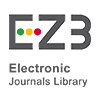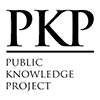The Implementation of CLIL (Content and Language Integrated Learning) to Promote Students’ Speaking at SMA Tumbuh Yogyakarta
Abstract
Keywords
Full Text:
PDFReferences
Abadi, C. P. (2015). Developing Speaking Skills in EFL English Course. In Journal on English as a Foreign Language 5( 2).
Afri, E. ., Marpaung, E. E. ., & Maulina, I. (2021). Enhancing Students’ Speaking Skills through Debate Techniques. International Journal of English and Applied Linguistics (IJEAL), 1(2), 141-146. https://doi.org/10.47709/ijeal.v1i2.1121
Cañado, M. L. P., & Lancaster, N. K. (2017). The effects of CLIL on oral comprehension and production: a longitudinal case study. Language Culture and Curriculum, 30(3), 300–316. https://doi.org/10.1080/07908318.2017.1338717
Carrió-Pastor, M. L., & Fortuño, B. B. (2020). Teaching Language and Content in Multicultural and Multilingual Classrooms. In Springer eBooks. https://doi.org/10.1007/978-3-030-56615-9
Clarke, V., & Braun, V. (2017). Thematic analysis. The Journal of Positive Psychology, 12(3), 297–298.
Creswell, J. W. (2011). Educational Research: Planning, Conducting, and Evaluating Quantitative and Qualitative Research. http://ci.nii.ac.jp/ncid/BB26859968
Creswell, J. W., & Creswell, J. D. (2017). Research Design: Qualitative, Quantitative, and Mixed Methods Approaches. SAGE Publications.
Demirel Fakiroğlu, G. (2021). The Relationship Between Receptive and Productive Skills of International Turkish Learners in Turkey. International Journal of Education Technology & Scientific Researches, 6(16).
el Majidi, A., de Graaff, R., & Janssen, D. (2024). Debate as a pedagogical tool for developing speaking skills in second language education. Language Teaching Research, 28(6), 2431-2452. https://doi.org/10.1177/13621688211050619
Feddermann, M., Möller, J., & Baumert, J. (2021). Effects of CLIL on second language learning: Disentangling selection, preparation, and CLIL-effects. Learning and Instruction, 74, 101459. https://doi.org/10.1016/j.learninstruc.2021.101459
First, E. (2022). EF EPI EF English Proficiency Index A Ranking of 111 Countries and Regions by English Skills. www.ef.com/epiwww.efset.org
Hemmi, C., & Banegas, D. L. (2021). International Perspectives on CLIL. In International perspectives on English language teaching. https://doi.org/10.1007/978-3-030-70095-9
Khairurrozikin, M., Sukartinigsih, W., & Subrata, H. (2020). The Influence of Genre Pedagogical and Content and Language Integrated Learning on Elementary Students’ Writing Skills. Seloka: Jurnal Pendidikan Bahasa Dan Sastra Indonesia, 9(2), 168–175. https://doi.org/10.15294/seloka.v9i2
Khokhar, S., Pathan, H., Raheem, A., & Abbasi, A. M. (2020). Theory Development in Thematic Analysis: Procedure and Practice. Review of Applied Management and Social Sciences, 3(3), 423–433. https://doi.org/10.47067/ramss.v3i3.7
Lichtman, K., & VanPatten, B. (2021). Was Krashen right? Forty Years Later. Foreign Language Annals, 54(2), 283–305. https://doi.org/10.1111/flan.12552
Merino, J. A., & Lasagabaster, D. (2018). CLIL as a way to multilingualism. International Journal of Bilingual Education and Bilingualism, 21(1), 79–92. https://doi.org/10.1080/13670050.2015.1128386
Muslim, A. B., Hamied, F. A., & Sukyadi, D. (2020). Integrative and instrumental but low investment: The English learning motivation of Indonesian senior high school students. Indonesian Journal of Applied Linguistics, 9(3), 493–507. https://doi.org/10.17509/ijal.v9i3.23199
Namaziandost, E., & Nasri, M. (2019). A Meticulous Look at Long’s (1981) Interaction Hypothesis: Does It Have Any Effect on Speaking Skill? Journal of Applied Linguistics and Language Research, 6(2), 218–230. https://www.researchgate.net/publication/334638586
Novitasari, Wahyuningsih, N., & Agustin, H. N. (2022). Improving Students’ Speaking Skills Through CLIL In Tourist Guiding Online Class. Celtic: A Journal of Culture, 9(1), 53–68. https://doi.org/10.22219/celtic.v9i1.20903
Pipit, M. (2018). CLIL as an Alternative Approach for Designing English Course Syllabus in Indonesia. The Asian ESP Journal, 47–53.
Pratolo, B., Habibie, A., & Setiawan, A. (2019, November). Speaking skill challenges encountered by Indonesian EFL learners’. In 2019 Ahmad Dahlan International Conference Series on Education & Learning, Social Science & Humanities (ADICS-ELSSH 2019) (pp. 160-164). Atlantis Press. https://doi.org/10.2991/adics-elssh-19.2019.7
Purnama, N. A., Rahayu, N. S., & Yugafiati, R. (2019). Students’ motivation in learning English. PROJECT (Professional journal of English education), 2(4), 539.
Riadil, I. G. (2020). A Study of students’ perception: identifying EFL learners’ problems in speaking skill. IJELR: International Journal of Education, Language, and Religion, 2(1), 31-38. https://doi.org/10.35308/ijelr.v2i1.2256
Rahardjo, A., & Pertiwi, S. (2020). Learning Motivation and Students’ Achievement in Learning English. JELITA, 1(2), 56-64. Retrieved from https://www.jurnal.stkipmb.ac.id/index.php/jelita/article/view/65
Spring, R., Kato, F., & Mori, C. (2019). Factors associated with improvement in oral fluency when using video-synchronous mediated communication with native speakers. Foreign Language Annals, 52(1), 87–100. https://doi.org/10.1111/flan.12381
Sreena, S., & Ilankumaran, M. (2018b). Developing Productive Skills Through Receptive Skills – A Cognitive Approach. International Journal of Engineering & Technology, 7(4.36), 669. https://doi.org/10.14419/ijet.v7i4.36.24220
Thomas, G. (2016). How to Do Your Case Study (2nd ed.). SAGE Publications Ltd.
Trinh, L. T. (2021). The Roles of Language Input and Output in Second Language Acquisition-Discussions and Pedagogical Implications for EFL Teachers. American Journal of Humanities and Social Sciences Research (AJHSSR) 5(9), 289-293 www.ajhssr.com
Wahyuningsih, S., & Afandi, M. (2020). Investigating English Speaking Problems: Implications for Speaking Curriculum Development in Indonesia. European Journal of Educational Research, 9(3), 967–977. https://doi.org/10.12973/EU-JER.9.3.967
DOI: http://dx.doi.org/10.18415/ijmmu.v12i3.6598
Refbacks
- There are currently no refbacks.
Copyright (c) 2025 International Journal of Multicultural and Multireligious Understanding

This work is licensed under a Creative Commons Attribution-NonCommercial-NoDerivatives 4.0 International License.
https://ijmmu.com
editor@ijmmu.com
facebook.com/ijmmu
Copyright © 2014-2018 IJMMU. All rights reserved.



































